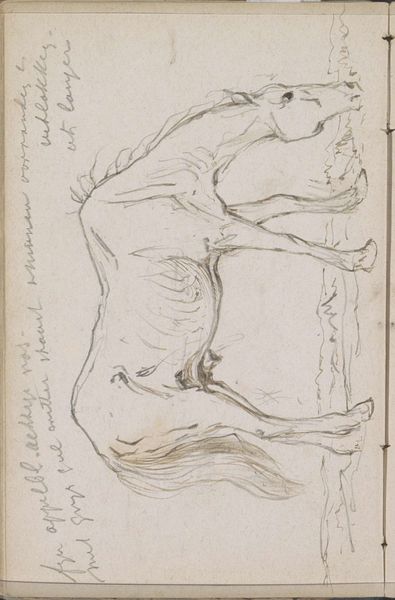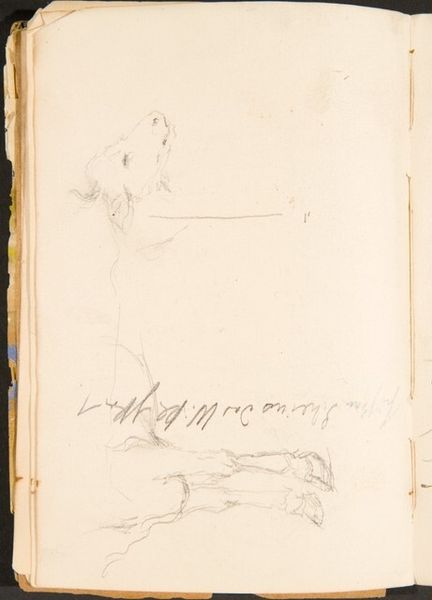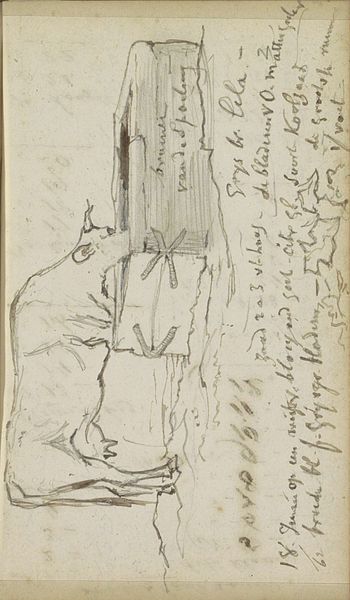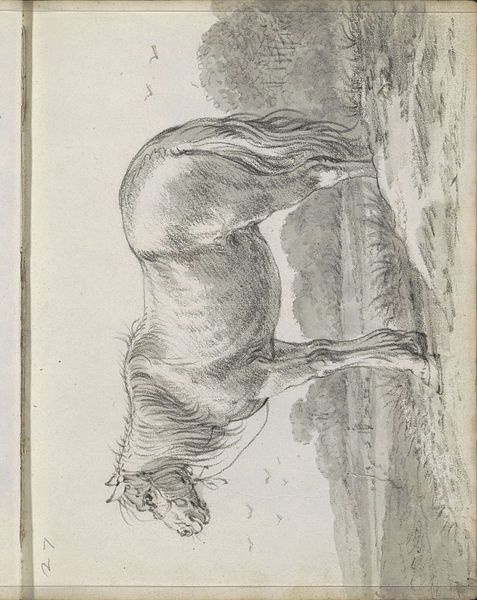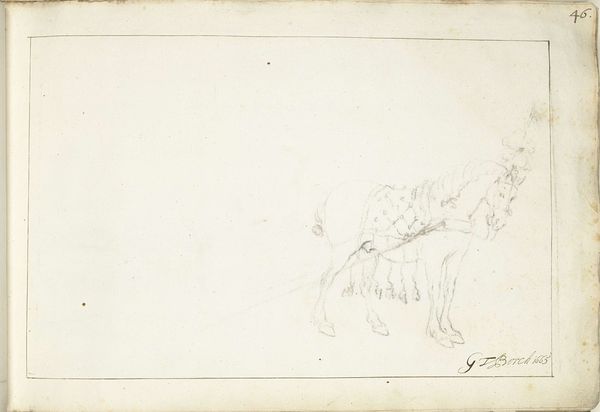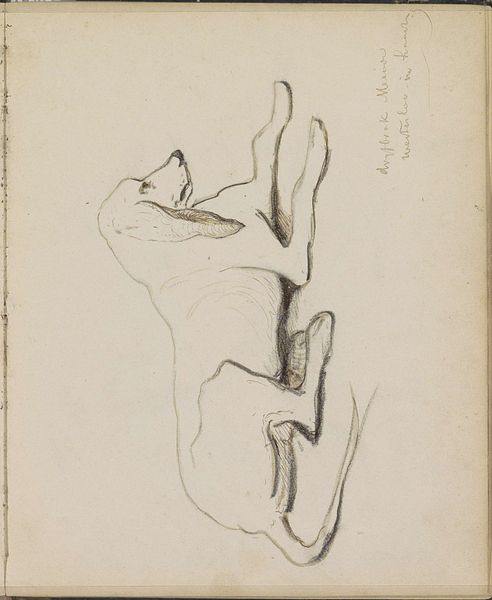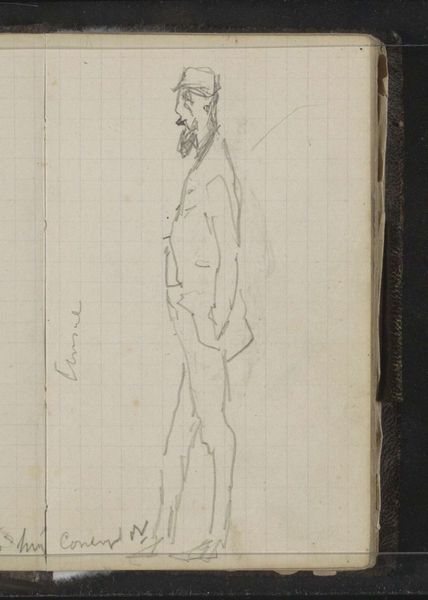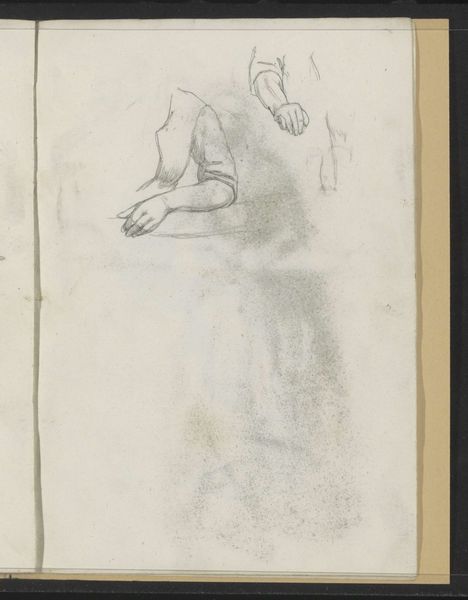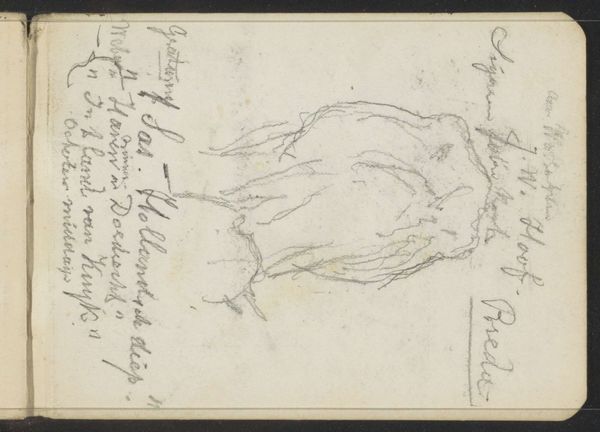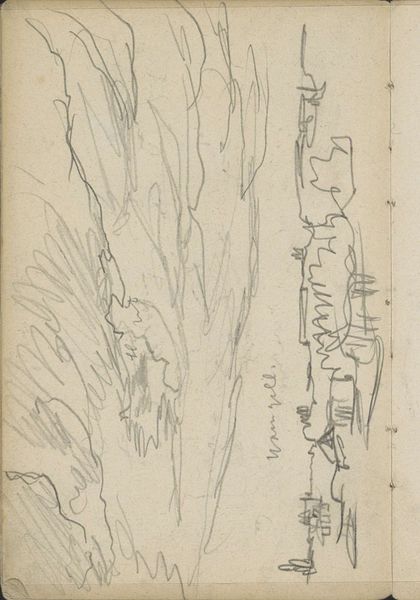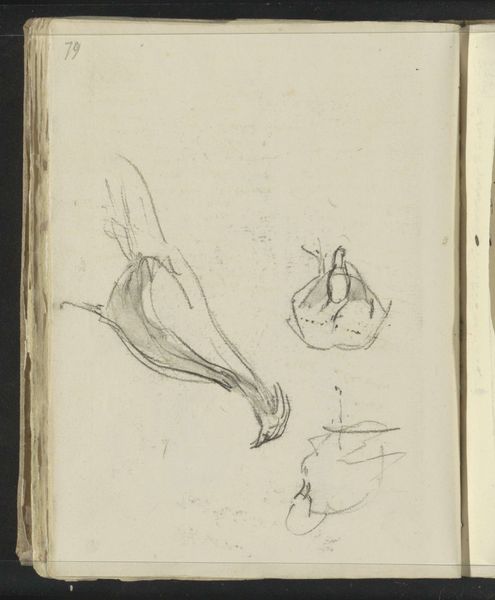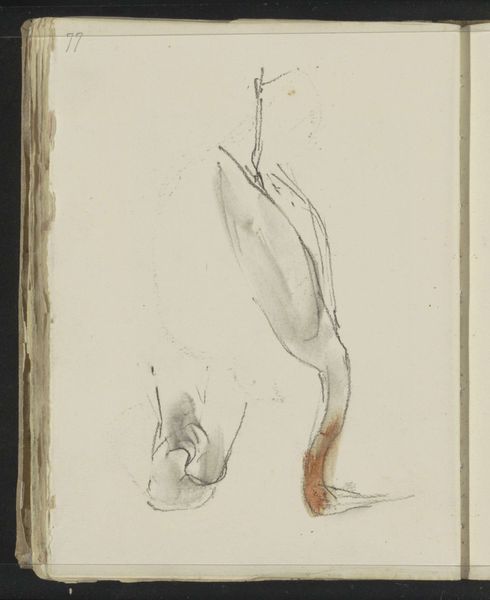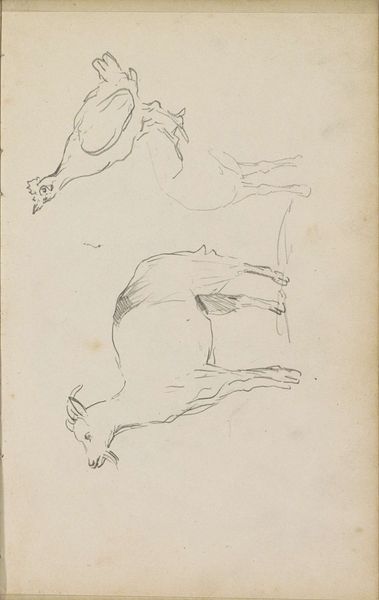
drawing, ink, pen
#
drawing
#
light pencil work
#
quirky sketch
#
pen sketch
#
incomplete sketchy
#
landscape
#
figuration
#
personal sketchbook
#
ink
#
ink drawing experimentation
#
pen-ink sketch
#
sketchbook drawing
#
pen
#
sketchbook art
#
realism
#
initial sketch
Copyright: Rijks Museum: Open Domain
Editor: This is “Landschap met een liggende koe en een molen,” or “Landscape with a Lying Cow and a Mill,” by Johannes Tavenraat, created sometime between 1862 and 1864. It's an ink drawing, and there's something almost dreamlike about it, especially with the cow looming so large over the miniature windmill. How do you interpret this work? Curator: I see a glimpse into the complex relationship between humans, animals, and the land in 19th-century Netherlands. The pastoral scene, seemingly tranquil, hints at the social and economic forces shaping the Dutch landscape at the time. Editor: Can you expand on that? What kind of forces? Curator: Consider the burgeoning agricultural industry. This sketch, with the cow so prominently displayed, almost monumentalized, could be read as a commentary on the animal’s role as a resource. The windmill, a symbol of human intervention, is dwarfed. It makes one consider who and what holds the real power in this landscape, doesn’t it? Also, note that the style looks like this work might have been created *en plein air.* Does that make you view it differently, knowing that it could have been a quick on-the-scene reflection of modern life? Editor: Definitely. Thinking about the context makes me consider the cow not just as an animal, but as a symbol of a shifting social and economic structure. The Dutch landscape was changing rapidly in that era. This resonates with me on a broader scale, regarding animals in agriculture today, where technology obscures our relationship with nature even more. Curator: Exactly. By viewing this drawing through a critical lens, we begin to question those power dynamics. And more to the point, to what extent did Dutch artists attempt to bring these ethical quandaries to the forefront, while often making art for the patrons complicit in this exploitation? Editor: It gives me so much more to think about when viewing seemingly straightforward landscape art. Thanks! Curator: Likewise! It’s rewarding to look at these intimate drawings as documents embedded in their own time.
Comments
No comments
Be the first to comment and join the conversation on the ultimate creative platform.

